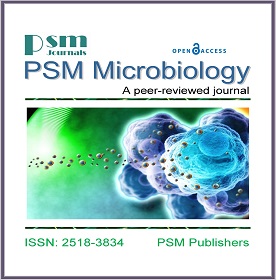Otitis Media in Children: Identification and Antibiotics Sensitivity of Bacterial Pathogens in Ibb City, Yemen
Keywords:
Otitis media, Bacterial Pathogens, Antibiotics Sensitivity, Children, Yemen.Abstract
Otitis media (OM) is an inflammation of the middle ear. Clinically, OM presents as acute otitis media (AOM) and if it persists for more than 3 months it is called chronic otitis media (COM). So, the present study was performed to identify the aerobic bacterial pathogens and determine the antibiotics sensitivity in children with OM in Ibb city, Yemen. Ear swabs were collected from 100 children (Male: 53, Female: 47) that suffered to OM, clinically diagnosed by Ear Nose Throat (ENT) specialist doctors. All patients samples were inoculated into different bacteriological media to isolate the bacterial pathogens using standard bacteriologic techniques and the antibiotics sensitivity against pathogenic bacteria were done using standard disc diffusion technique. According physician and clinical diagnosis, our results showed that OM children were COM (70%) more than AOM (30%). Also, our findings indicated that the growth of aerobic gram positive bacteria was 50 (50%) more than gram negative bacteria 47 (47%) and children with non-growth of bacteria was 3 (3%). The most common type of gram positive bacteria was Streptococcus pneumoniae (27%), whereas the most common type of gram negative bacteria was Pseudomonas aeroginosa (21%). The broad spectrum antibiotic sensitivity against gram positive and gram negative bacteria showed that the most effective and suitable antibiotics were Kanamycin and Amikacin (92%, 91%, respectively), while an effective antibiotic against S. pneumoniae was Vancomycin (80%) and an effective antibiotic against P.aeroginosa was Carbencillin (89%). In addition, our results showed that breastfeeding prevented OM in (63.3%) of infected children; whereas, passive smoking enhanced OM infection in (58%) ones. It can be concluded that the routine culture and sensitivity test remains the most important way for treating Otitis media and to prevent the risk of empirical therapy and antibiotic resistance to them.




